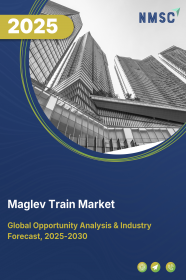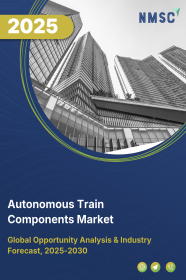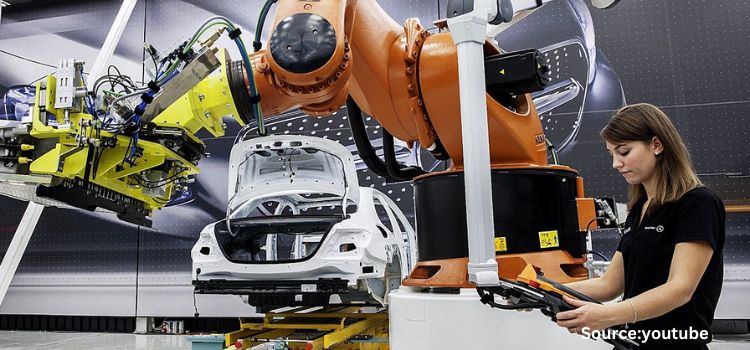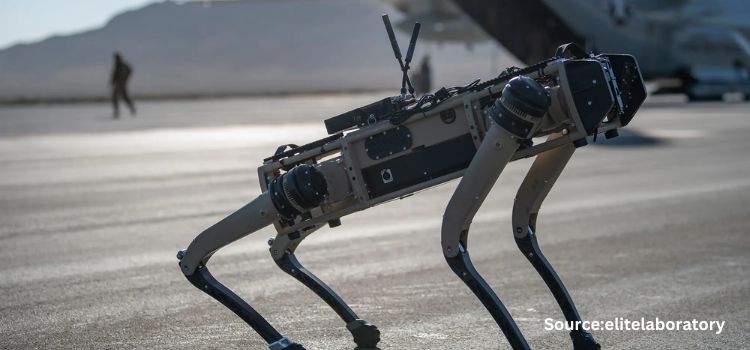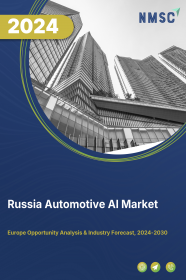
Russia Automotive AI Market by Component (Hardware, Software, and Services), by Technology (Machine Learning & Deep Learning, Computer Vision, and Natural Language Processing), and by Application (Semi-Autonomous and Fully Autonomous) - Opportunity Analysis and Industry Forecast, 2024– 2030
Industry: Automotive & Transportation | Publish Date: 04-Apr-2024 | No of Pages: 101 | No. of Tables: 71 | No. of Figures: 36 | Format: PDF | Report Code : N/A
Market Definition
The Russia Automotive AI Market size was valued at USD 220.1 million in 2023, and is predicted to reach USD 1315.6 million by 2030, at a CAGR of 29.1% from 2024 to 2030. Automotive Artificial Intelligence, or Automotive AI, refers to the application of machine learning and artificial intelligence technologies in the design, development, and operation of vehicles and related systems within the automotive industry. Automotive AI consists a wide range of applications, including autonomous driving, advanced driver assistance systems (ADAS), predictive maintenance, natural language processing for in-car voice recognition, and improving the overall efficiency and safety of vehicles. This technology enables vehicles to perceive their surroundings, make decisions, and interact with drivers and passengers. This further enhances the driving experience, safety, and efficiency of automotive systems.
Increasing Demand for the Electric Vehicles is Driving the Growth of the Market
The surging demand for electric vehicles (EVs) is significantly driving the automotive landscape. Also, the integration of artificial intelligence (AI) is playing a pivotal role in optimizing various sides of electric vehicle technology. AI is at the forefront of battery management, where advanced algorithms monitor and predict battery health, ensuring longevity and reliability. Additionally, machine learning is harnessed to enhance the energy efficiency of EVs, optimizing power usage and improving range prediction accuracy. The optimization of charging infrastructure, personalized user experiences through natural language processing and voice recognition, and the implementation of predictive maintenance contribute to a seamless and efficient electric vehicle ownership experience.
Growing Integration of IoT in Automotive Industry is Boosting the Market Expansion
The seamless integration of the Internet of Things (IoT) into vehicles stands as a pivotal factor propelling the adoption of artificial intelligence (AI) in the automotive sector. In the contemporary automotive landscape, vehicles are equipped with an array of sensors and connected devices, generating vast streams of real-time data on performance, environmental conditions, and user interactions. The IoT facilitates the interconnectedness of these devices, enabling them to share and communicate data efficiently. Leveraging AI, these connected vehicles can process and analyze the copious amounts of data, offering transformative benefits such as predictive maintenance, advanced driver assistance systems (ADAS), personalized in-car experiences, and optimized traffic management.
Standardization Challenges Associated with Automotive AI Hinders the Market Expansion
The lack of standardization poses a significant challenge in the realm of automotive AI, as the industry grapples with the absence of universally accepted protocols governing the development and deployment of these advanced technologies. This deficiency gives rise to interoperability issues, making it challenging for AI systems from different manufacturers to communicate seamlessly. Compatibility challenges arise as proprietary technologies diverge, hindering the creation of a cohesive and interconnected automotive AI ecosystem. Furthermore, this absence of common standards leads to market fragmentation, making it difficult for stakeholders to navigate and understand the rapidly evolving landscape of automotive AI.
The Rising Prevalence of Advanced Driver Assistance Systems (ADAS) Create Opportunities for the Market
Advanced Driver Assistance Systems (ADAS) represent a pivotal aspect of automotive safety and convenience, employing sensors and cameras to enhance driving experiences. The integration of artificial intelligence (AI) into ADAS plays a crucial role in transforming these systems into intelligent, responsive mechanisms. AI algorithms, powered by machine learning, analyze real-time data from sensors, enabling features such as adaptive cruise control, lane-keeping assistance, and automatic emergency braking. The future opportunity in this domain lies in the continuous refinement of ADAS functionalities through advancements in AI, promising improved accuracy, responsiveness, and a broader range of capabilities. As the automotive industry continues its pursuit of safer and more efficient driving, the integration of AI into ADAS stands at the forefront, paving the way for the development of increasingly sophisticated and reliable driver assistance technologies. The growing demand for enhanced safety features and regulatory emphasis on advanced technologies in vehicles underscore the immense potential for the automotive AI market within the ADAS segment.
Competitive Landscape
The market players operating in the Russia automotive AI market include NVIDIA Corporation, Alphabet, Inc., Intel Corporation, Microsoft Corporation, IBM Corporation, Qualcomm, Inc., Tesla, Inc., BMW AG, Micron Technology, Xilinx, Inc.
Russia Automotive AI Market Key Segments
By Component
-
Hardware
-
Software
-
Services
By Technology
-
Machine Learning & Deep Learning
-
Computer Vision
-
Natural Language Processing
By Application
-
Semi-Autonomous
-
Fully Autonomous
REPORT SCOPE AND SEGMENTATION:
|
Parameters |
Details |
|
Market Size in 2023 |
USD 220.1 Million |
|
Revenue Forecast in 2030 |
USD 1315.6 Million |
|
Growth Rate |
CAGR of 29.1% from 2024 to 2030 |
|
Analysis Period |
2023–2030 |
|
Base Year Considered |
2023 |
|
Forecast Period |
2024–2030 |
|
Market Size Estimation |
Million (USD) |
|
Growth Factors |
|
|
Companies Profiled |
10 |
|
Market Share |
Available for 10 companies |
|
Customization Scope |
Free customization (equivalent up to 80 working hours of analysts) after purchase. Addition or alteration to country, regional, and segment scope. |
|
Pricing and Purchase Options |
Avail customized purchase options to meet your exact research needs. |
KEY PLAYERS
-
NVIDIA Corporation
-
Alphabet, Inc.
-
Intel Corporation
-
Microsoft Corporation
-
IBM Corporation
-
Qualcomm, Inc.
-
Tesla, Inc.
-
BMW AG
-
Micron Technology
-
Xilinx, Inc.

















 Speak to Our Analyst
Speak to Our Analyst



